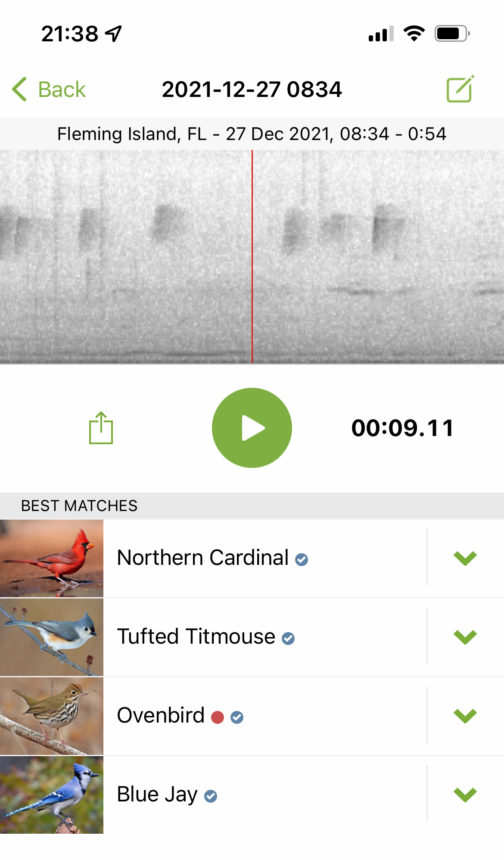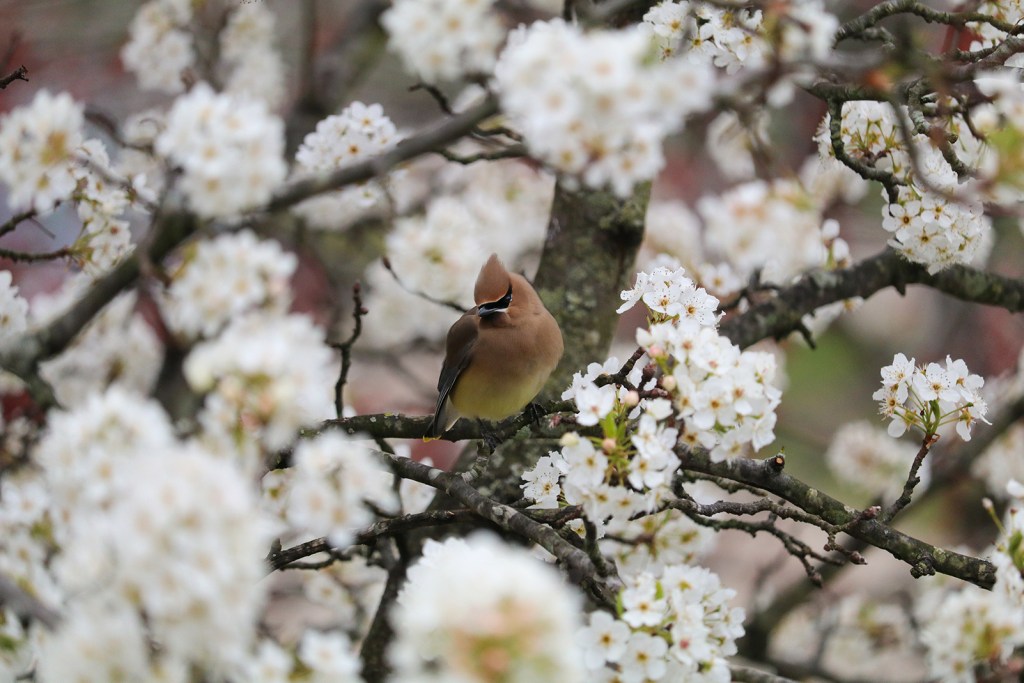When I began my Zero to Hero Birding Journey (going on seven years ago now), my birding mentor Tim Boucher required that I (a) download the Merlin birding app, (b) learn to be quick with my binoculars, and (c) put time into learning to “bird by ear.”
So I dutifully downloaded the Merlin App, practiced with my binoculars (to the concern of my neighbors), and spent time with the different quizzes and tutorials on eBird, the Cornell Lab of Ornithology’s online birding mecca, learning to recognize different birds by their songs and calls. Spring migration arrived and I was so ready.
And then I hit the woods and realized trying to identify a single bird amidst all the different calls and songs and cries was like standing on the corner of State Street in Chicago at rush hour trying to identify the make of a car by the sound of its horn amidst all the other horns and traffic noises. In a word, for me, hopeless. And so frustrating.
Of course, that was then, this is now. And now, the Merlin App, which unlocked birding for me all those years ago with the Bird ID Wizard, is once again helping me up my birding game with Sound ID. It’s not quite as good as having your own personal birding coach, but it’s the closest thing I’ve found to birding with a human expert.
It really is like the Shazam music app for birds. Hear a bird song or call you don’t recognize, fire up Merlin SoundID and it will give you suggestions. Just like Shazam helps you identify that 80s song playing in a coffee shop, but for cedar wax wings and ovenbirds instead of Heaven 17 or Siouxsie and the Banshees.
Ode to Merlin, Redux
From those birding wizards at the Cornell Lab of Ornithology, the Merlin App and its integrations just keep getting better. Available on both the App Store and Google Play, I’ve lost track of how many times I’ve recommended Merlin to friends and, well, pretty much every stranger with binoculars I meet on the trail. During the pandemic, I ended every Zoom call with friends (and okay, strangers) with a recommendation to download Merlin and begin a meaningful and rewarding birding journey (even if we weren’t talking about birding).

In combination with my field guides, Merlin, eBird and other resources, my walks in the woods have become more and more like visiting friends I know by the sound of their voices. I can name most of the standard backyard birds in my Maryland neighborhood (cardinals, robins, juncos, hawks, blue jays), but the most rewarding thing for me is that I can now pick out new-to-me songs and calls among the chatter, and practice learning them.
In the years since I’ve been using Merlin, the bird packs are continually expanding. And you still don’t need to be connected to wifi or even have a cell signal to use Merlin on your phone once you’ve downloaded the packs that correspond to your geography. If you tried Merlin once and didn’t think it was robust enough for you, I encourage you to give it another go. There are bird packs for geographies all over the world.
Merlin SoundID Test Run in Florida
The App is extremely easy to use and I started experimenting with it several months ago on a trip to Florida, and was immediately impressed and delighted.
I’d stepped out with my tea and binoculars at sunrise and was disappointed to find a cloudy, misty morning. The light was so flat and gray it was impossible to see color, and the bird sounds were so mixed and overlapping, I was immediately transported back to my first attempt to bird by ear. It was too much, too unfamiliar and too fast. Like undertaking a language immersion in the cafeteria at the UN. I definitely need the single species, one-language-at-a-time approach, and Merlin opened the window for that.
I turned on Sound ID and let it run, watching as the App populated a list of birds Merlin suggested were out there in the mist. Then I started parsing the songs and calls I knew (red-shouldered hawk, pileated woodpecker, American robin), and then focusing on listening for the ones I didn’t. I would have never known there was an ovenbird flitting amongst the dripping branches if Merlin hadn’t identified it for me.
I got my binoculars and made my way through the thin woods, stalking the ovenbird until I got the visual sighting to go with the sound identification. New life lister for me!

One of the best aspects of SoundID is the spectrogram of the recording that lets you go back and replay the songs you heard and compare with the recordings of calls loaded into the app. The connection between the visual and the audio has been incredibly helpful for improving my birding by ear skills at a pace I wouldn’t have thought possible.
SoundID Scavenger Hunt
Most recently, I was waiting for my son to finish baseball practice and was curious about what might be around. So I held my phone out for about 30 seconds and got a wonderful surprise—cedar waxwings! Merlin said they were there, but I couldn’t see them.
I thought Merlin might be wrong (it happens), but then I went over to a tree full of European starlings (also identified by Merlin) and there they were: About seven cedar wax wings darting among the branches.
There is something soothing, and rewarding about learning to recognize and appreciate the songs and calls of the birds that can so often be an anonymous background soundtrack to my daily life. For me, Merlin’s SoundID has been a pandemic blessing and a gift to remind me that there is more to observation than just looking, it’s important to learn to listen and recognize, too.




Join the Discussion